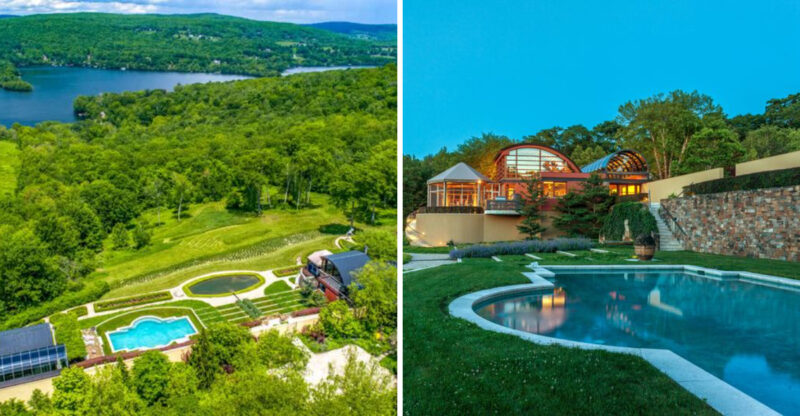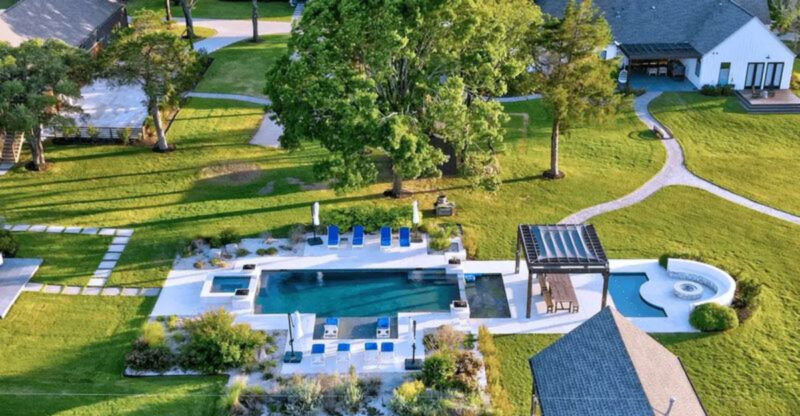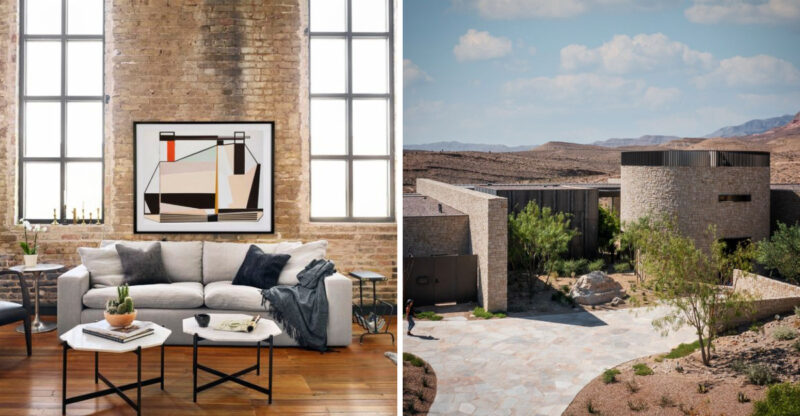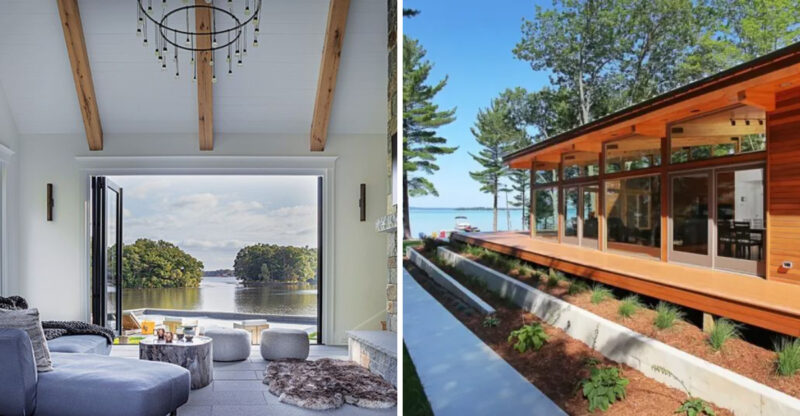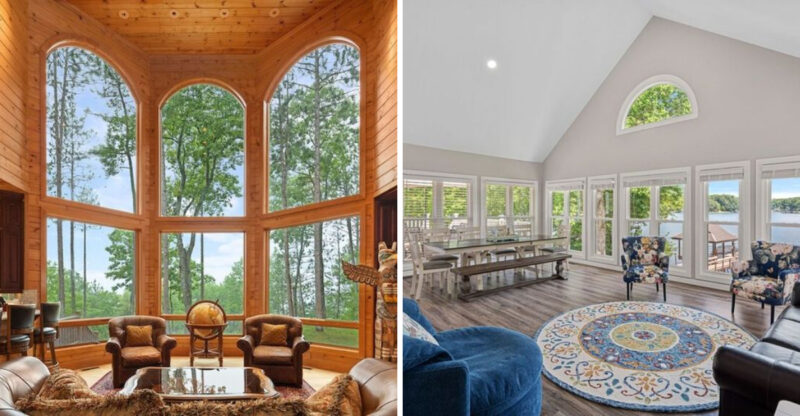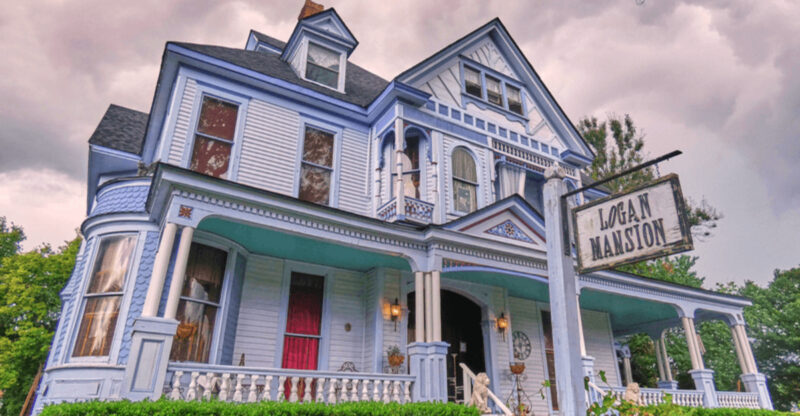16 Antebellum Homes In The South You Shouldn’t Miss
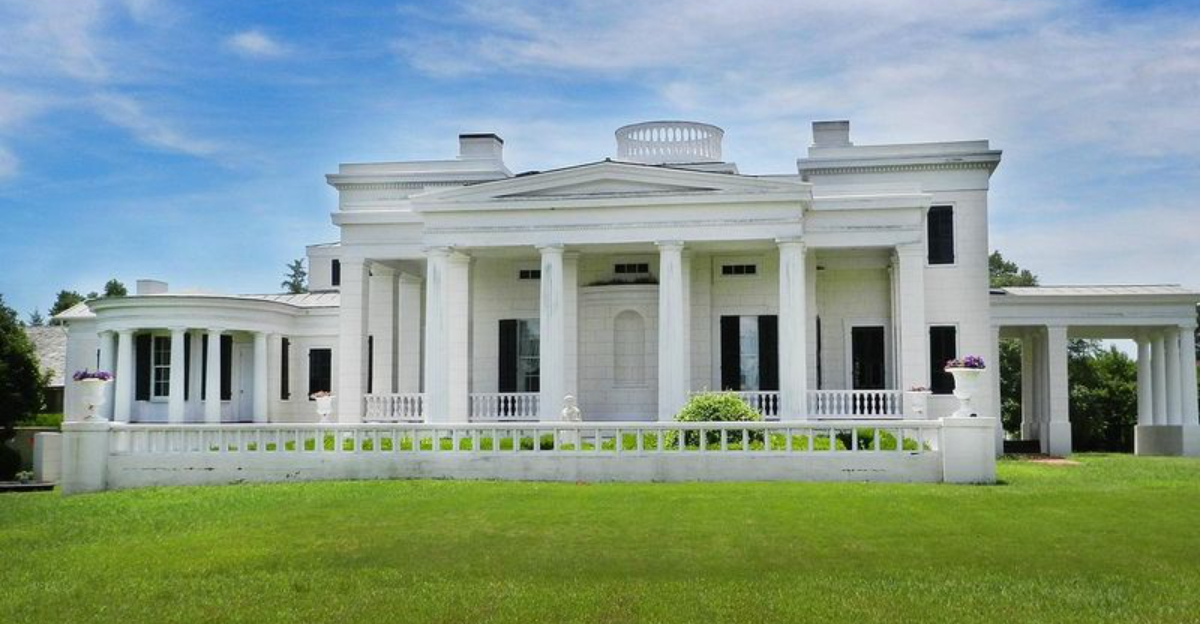
The American South is home to some of the most breathtaking antebellum mansions that stand as proud reminders of a bygone era.
These grand homes, built before the Civil War, showcase stunning Greek Revival, Federal, and Classical architecture with their imposing columns, sweeping verandas, and ornate details.
If you’re planning a Southern road trip or simply love historic homes, these 16 magnificent estates offer a fascinating glimpse into the region’s complex past and architectural splendor.
1. Oak Alley Plantation (Louisiana)
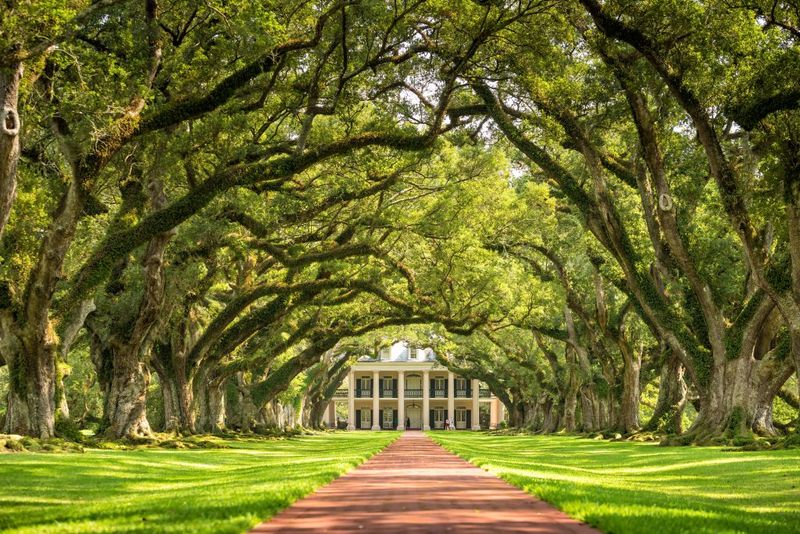
Majestic oak trees form a quarter-mile canopy leading to this spectacular Greek Revival mansion. Built in 1839, Oak Alley’s most famous feature is the alley of 28 enormous 300-year-old live oak trees creating a shaded path to the Mississippi River.
The mansion’s symmetrical design boasts 28 columns representing the oak trees, along with a wrap-around veranda offering panoramic views of the surrounding sugar plantation. Inside, period furnishings and exhibitions tell stories of both the wealthy plantation owners and the enslaved people who worked there.
Located in Vacherie, Louisiana, Oak Alley offers daily tours, special events, and overnight accommodations in century-old cottages on the grounds. The combination of natural beauty and architectural grandeur makes it one of America’s most photographed plantations.
2. Longwood (Mississippi)
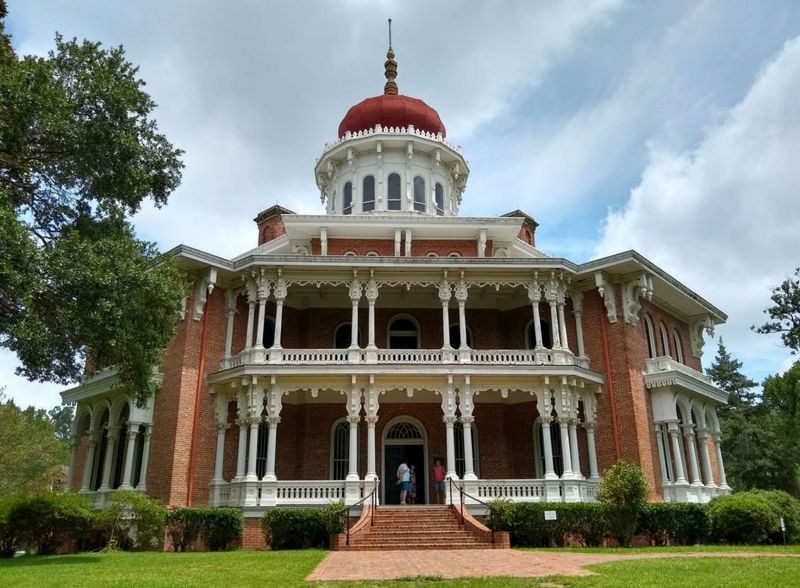
Standing as America’s largest octagonal house, Longwood’s unusual onion-shaped dome instantly captures attention. This architectural marvel remains perpetually unfinished – a haunting reminder of dreams interrupted by the Civil War.
When war broke out in 1861, Northern craftsmen abandoned their tools and fled home, leaving only the exterior and basement completed. The wealthy Haller Nutt family was forced to live in the basement while the upper floors remained skeletal frames exactly as they appear today.
Visitors can tour both the furnished basement rooms where the family lived and the ghostly unfinished upper floors where tools still lie where workers left them. This six-story, 30,000-square-foot mansion in Natchez offers a uniquely preserved glimpse into a moment when Southern aristocratic ambitions collided with historical reality.
3. Belle Meade Plantation (Tennessee)
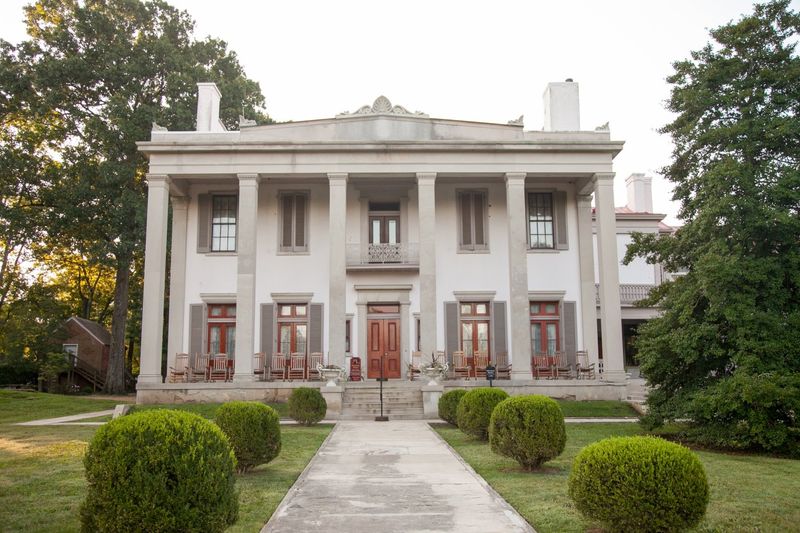
Known as the “Queen of Tennessee Plantations,” Belle Meade’s legacy lives on through the bloodlines of champion thoroughbreds. The impressive Greek-Revival mansion, built in 1853, features massive limestone columns quarried right on the property.
Horse racing enthusiasts will be thrilled to learn that famous Kentucky Derby winners like Secretariat, Seabiscuit, and War Admiral can trace their lineage back to horses bred here. The estate once encompassed 5,400 acres and was home to the South’s premier thoroughbred breeding farm.
Today, Belle Meade offers a unique experience combining history with wine tasting from its on-site winery. The tour guides, dressed in period attire, bring to life stories of the Harding-Jackson family and the enslaved individuals who built this agricultural empire just outside Nashville.
4. Nottoway Plantation (Louisiana)
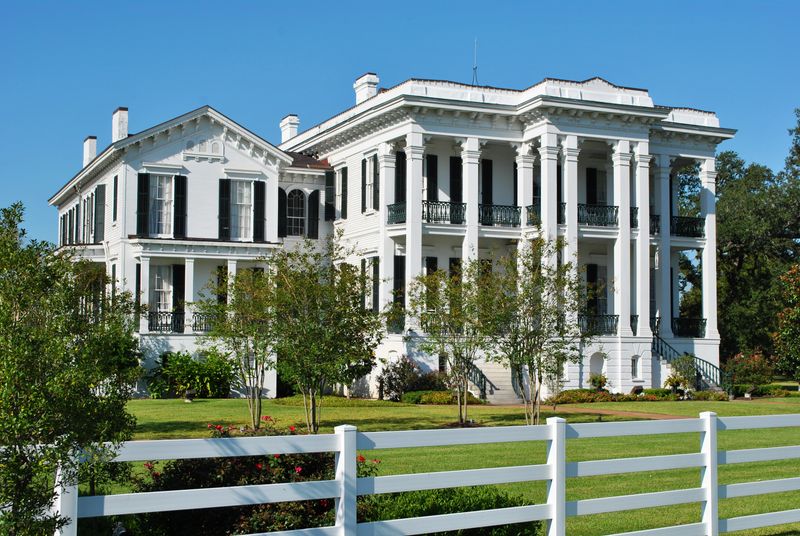
Gleaming white against the Mississippi River landscape, Nottoway stands as the South’s largest remaining antebellum mansion. This dazzling 53,000-square-foot white palace contains an astonishing 64 rooms, 200 windows, and 165 doors all the vision of wealthy sugar planter John Hampden Randolph.
Built in 1859, the mansion’s most remarkable feature is the semi-circular White Ballroom where Randolph’s daughters made their society debuts. Its pure white décor floors, walls, ceiling, and furnishings created an ethereal backdrop for young women in white gowns.
Unlike many plantations that fell into ruin after the Civil War, Nottoway survived relatively unscathed. Today, it functions as a resort where guests can stay overnight in rooms furnished with period antiques, truly experiencing the opulence of the Old South.
5. Stanton Hall (Mississippi)
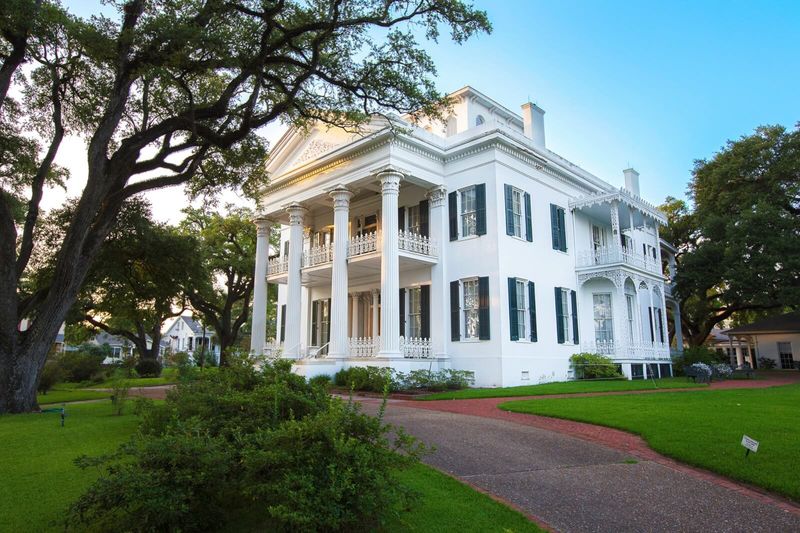
Occupying an entire city block in downtown Natchez, Stanton Hall epitomizes antebellum extravagance. Cotton broker Frederick Stanton spared no expense when building this palatial home in 1857, importing marble mantels from New York, mirror frames from France, and furniture from Philadelphia.
The mansion’s 11,000 square feet feature soaring 17-foot ceilings, enormous double parlors, and massive Corinthian columns. Gold-leafed mirrors were positioned to reflect candlelight throughout the rooms, creating a magical glow during evening gatherings.
Though Frederick Stanton died just months after moving in, his family continued to live here until 1894. The Pilgrimage Garden Club saved it from demolition in 1938 and now operates tours of the meticulously restored interiors. Fun fact: Stanton Hall served as the inspiration for Disney’s Haunted Mansion attraction!
6. Rosedown Plantation (Louisiana)
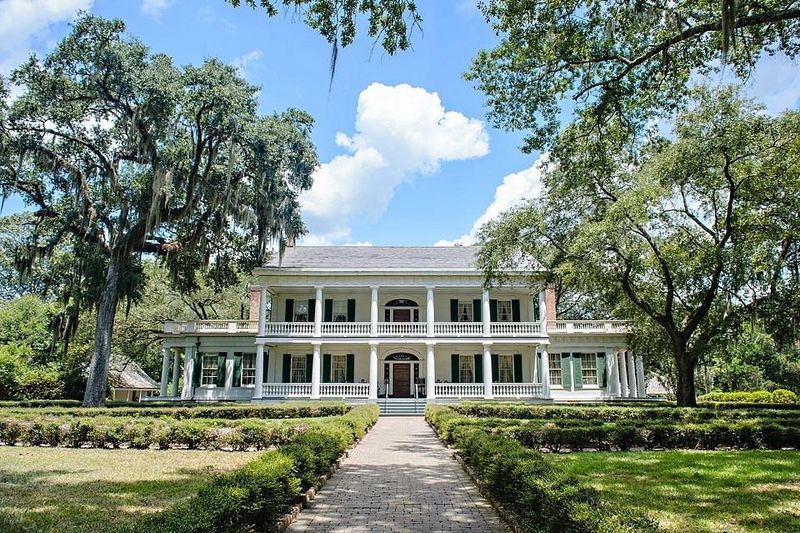
Hidden among 28 acres of breathtaking formal gardens, Rosedown stands as one of the most intact plantation complexes in the South. The 1835 Federal-style mansion sits at the end of a magnificent oak alley in St. Francisville, where it was built by cotton planters Daniel and Martha Turnbull.
Martha’s passion for gardening transformed the grounds into elaborate European-inspired gardens with gazebos, statuary, and rare plant specimens collected during the couple’s grand tours abroad. Many original garden features and plants still survive today, making it a horticultural treasure.
Inside, the home retains an astounding 90% of its original furnishings Belter sofas, Mallard beds, Aubusson carpets, and family portraits providing an authentic glimpse into the lives of wealthy plantation owners. The estate’s 13 historic buildings include original slave cabins that tell a more complete story of plantation life.
7. Magnolia Grove (Alabama)
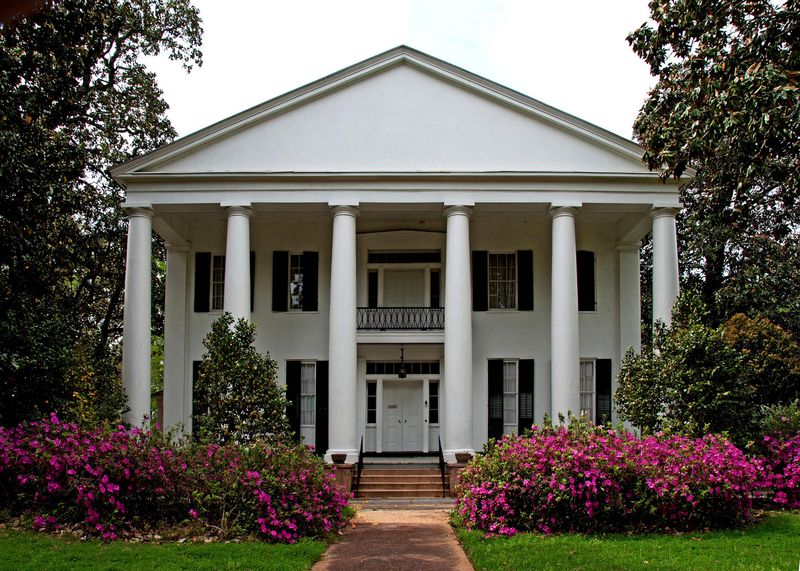
Brick by handmade brick, Magnolia Grove emerged as a masterpiece of Federal-style architecture in Greensboro, Alabama. Built in 1840 by Isaac and Sarah Croom, this distinctive red brick mansion features unusual details like fluted Doric columns and intricate fanlight windows above the doors.
What makes Magnolia Grove truly special is its remarkable state of preservation. The original pine floors still creak underfoot, and most furnishings from four-poster beds to silver serving pieces belonged to the Croom family who lived here for generations.
The estate takes its name from the magnificent Southern magnolia trees dotting the landscape. A detached kitchen, slave quarters, and cook’s house provide insights into daily life beyond the main house. History buffs will appreciate that the mansion narrowly escaped destruction during the Civil War when Union soldiers occupied Greensboro.
8. Hay House (Georgia)
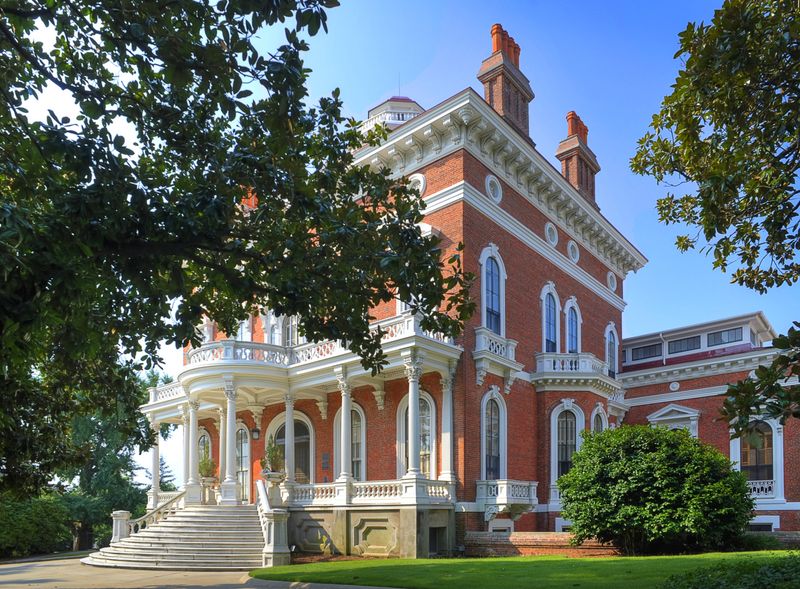
Often called the “Palace of the South,” Hay House dazzles visitors with its Italian Renaissance style that stands out among typical Greek Revival mansions. Completed in 1859 after four years of construction, this 18,000-square-foot masterpiece in Macon showcases technological innovations that were revolutionary for its time.
William Butler Johnston, who made his fortune supplying the Confederate Army, installed indoor plumbing, central heating, gas lighting, and a speaker-tube system for communicating between rooms. The mansion’s 24 rooms feature elaborate plasterwork, painted ceilings, and a stunning three-story rotunda topped with a stained-glass dome.
The most jaw-dropping space is the music room with its 30-foot ceiling adorned with trompe l’oeil paintings creating the illusion of sculptured moldings. Unlike many antebellum homes, Hay House remained a private residence until 1962, allowing it to evolve through Victorian and early 20th-century periods.
9. Rosalie Mansion (Mississippi)
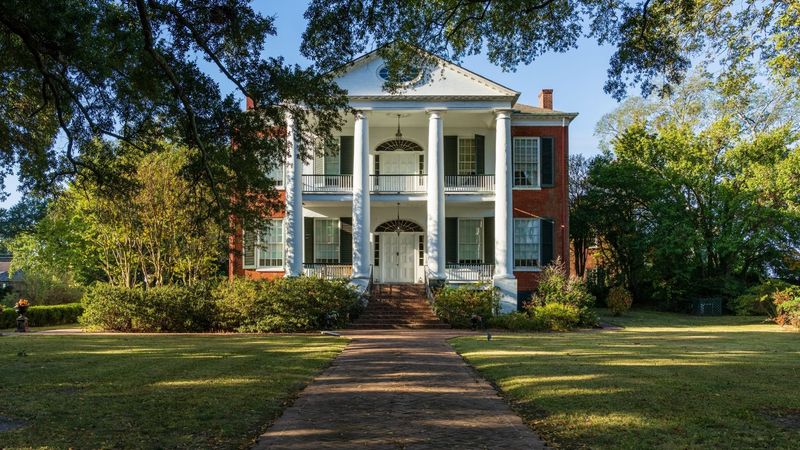
Perched dramatically on a bluff overlooking the Mississippi River, Rosalie commands attention with its perfect proportions and historical significance. Built in 1823 by a wealthy cotton broker, this Federal-style mansion became the Union Army headquarters during the Civil War occupation of Natchez.
The original owner, Peter Little, named the home after Fort Rosalie which once stood on the same site – the first French settlement in the Mississippi Valley established in 1716. Inside, visitors marvel at the magnificent spiral staircase that appears to float without visible support a testament to the skilled craftsmanship of the era.
Owned and operated by the Daughters of the American Revolution since 1938, Rosalie houses an impressive collection of period furnishings including pieces by renowned cabinetmaker Belter. The sweeping views from the front porch across the mighty Mississippi offer the same panorama that has captivated residents for nearly two centuries.
10. Evergreen Plantation (Louisiana)
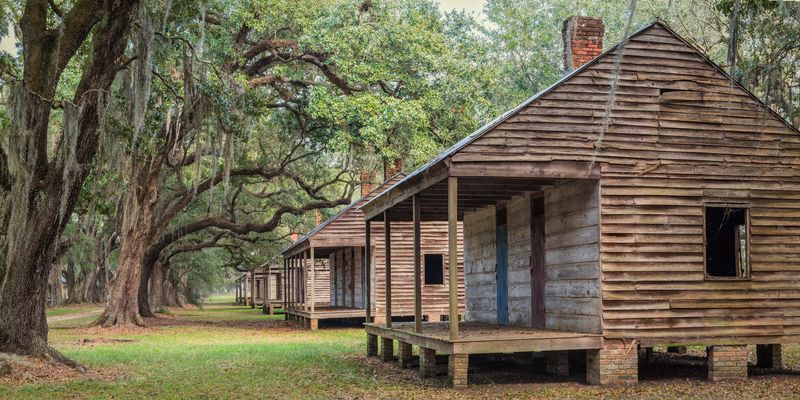
Among Louisiana’s sugar plantations, Evergreen stands as the most intact agricultural complex in the South with 37 buildings on the National Register of Historic Places. The main house, built in 1790 and remodeled in the Greek Revival style in 1832, features the classic alley of live oaks leading to its entrance.
What truly distinguishes Evergreen is the rare surviving double row of 22 slave cabins forming a street behind the main house. These preserved quarters provide an honest look at plantation life beyond the big house’s grandeur, telling a more complete story of the people who lived and worked here.
Unlike many plantations that operate solely as tourist attractions, Evergreen remains a working sugar cane plantation today. Located in Edgard along the Great River Road, it offers one of the most comprehensive plantation tours available, focusing on the interconnected lives of all plantation residents.
11. Millford Plantation (South Carolina)
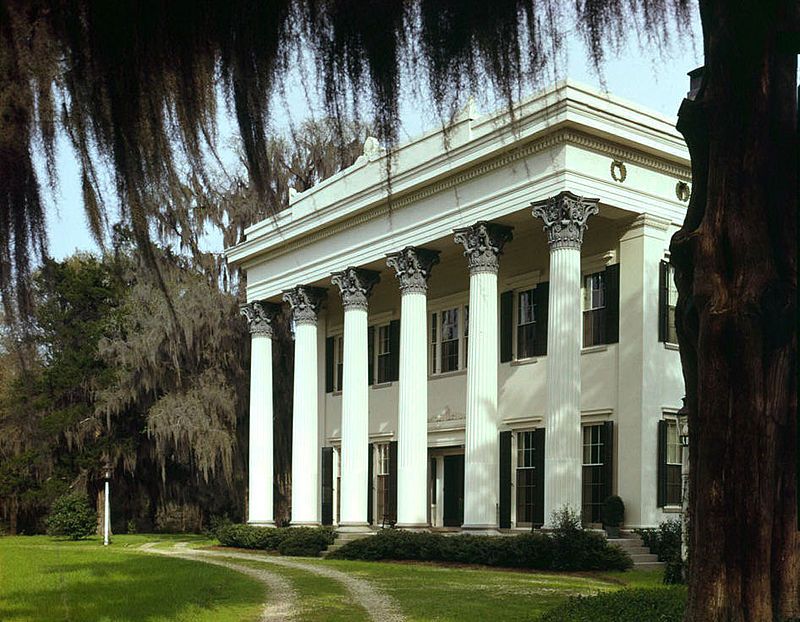
Architectural historians consider Millford the finest Greek Revival residence in rural America. Hidden away in Sumter County, this 1841 masterpiece survived Sherman’s March through South Carolina completely intact – reportedly because the Union officer in charge was so impressed by its beauty that he ordered it spared.
The mansion’s most striking feature is its massive hexastyle portico with six colossal Corinthian columns carved from solid blocks of stone. Inside, the original Duncan Phyfe furniture still graces the rooms – perhaps the most complete collection of this renowned cabinetmaker’s work in its original setting. Millford’s remote location helped preserve it in near-original condition.
The plantation remained in private hands until 2008 when it was acquired by the Classical American Homes Preservation Trust. Today, limited tours allow visitors to experience what many experts call “the last and the first” the last great house built before the Civil War and the first great preservation success story.
12. Hofwyl-Broadfield Plantation (Georgia)
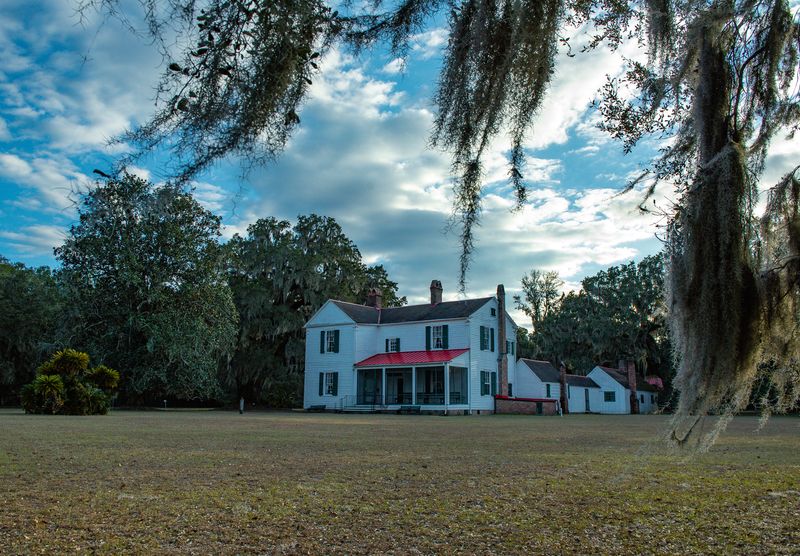
Rice fields once stretched as far as the eye could see from this modest plantation house near Brunswick, Georgia. Unlike the ostentatious mansions of cotton and sugar barons, Hofwyl-Broadfield represents the more typical Southern planter’s home practical, comfortable, but still gracious.
Established in the early 1800s by William Brailsford, the plantation produced rice using the tidal flow of the Altamaha River and the labor of enslaved workers. What makes this site remarkable is that it remained in the same family for five generations until 1973, when the last heir left it to the state of Georgia exactly as it had been lived in.
The house appears frozen in time, with family photos, books, and personal items still in place. The surrounding marshlands, once productive rice fields, have returned to their natural state, providing a haven for wildlife. A small museum displays family silver and the last owner’s collection of china.
13. Gaineswood (Alabama)
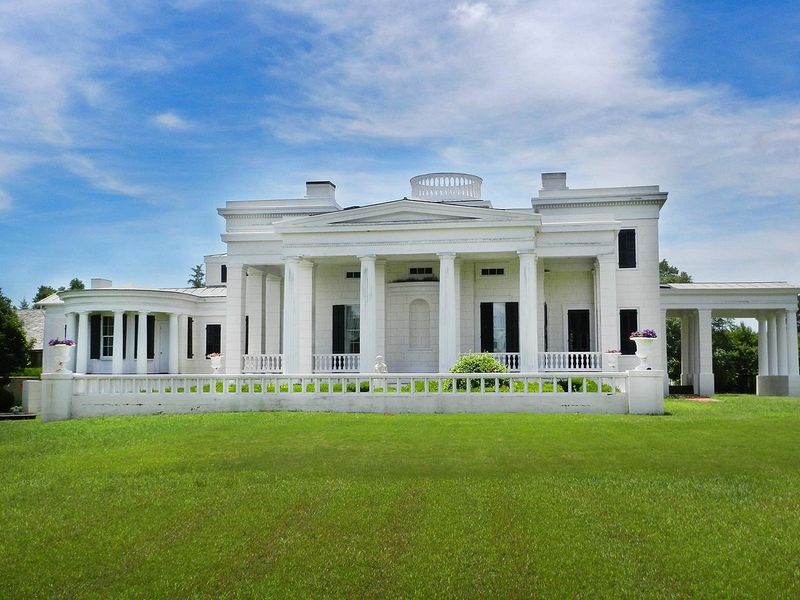
From humble dogtrot cabin to architectural masterpiece, Gaineswood evolved over 18 years as its owner, amateur architect Nathan Bryan Whitfield, continuously expanded and refined it. Located in Demopolis, this National Historic Landmark represents the height of Greek Revival style with its distinctive asymmetrical appearance.
The interior showcases some of America’s finest examples of Greek Revival ornamentation. Elaborate plasterwork ceilings, carved wooden details, and built-in furnishings were all designed by Whitfield himself. Most remarkable are the domed ceilings created without nails using a complex technique of layered wood strips.
Local legend claims the house is haunted by Whitfield’s sister-in-law who died while visiting and was temporarily entombed in the basement until spring thaws allowed proper burial. Her piano music reportedly echoes through the halls on quiet evenings. Today, Gaineswood stands as Alabama’s finest example of Greek Revival architecture and a testament to one man’s artistic vision.
14. Brame House (Mississippi)
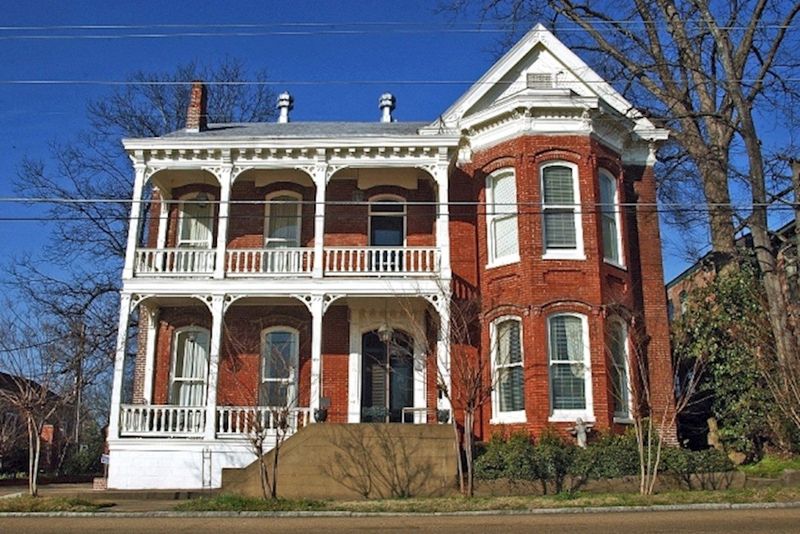
Tucked away on a quiet street in Port Gibson sits one of Mississippi’s hidden architectural gems. The Brame House, built in 1851, stands out for its unusual Italianate design – a stark departure from the typical Greek Revival style of the era. Ornate bracketed cornices, arched windows, and a distinctive cupola crown this two-story brick mansion.
The front façade features an asymmetrical layout with a side entrance and gallery rather than the central portico common to most antebellum homes. Inside, the spiral staircase appears to float without support as it winds gracefully to the second floor. During the Civil War, the house briefly served as Union General Grant’s headquarters as he advanced toward Vicksburg.
Today, the privately-owned home opens occasionally for special tours and local heritage events. Architecture enthusiasts consider it a must-see example of how Southern plantation design was evolving just before the Civil War halted such innovations.
15. Traveller’s Rest (Tennessee)
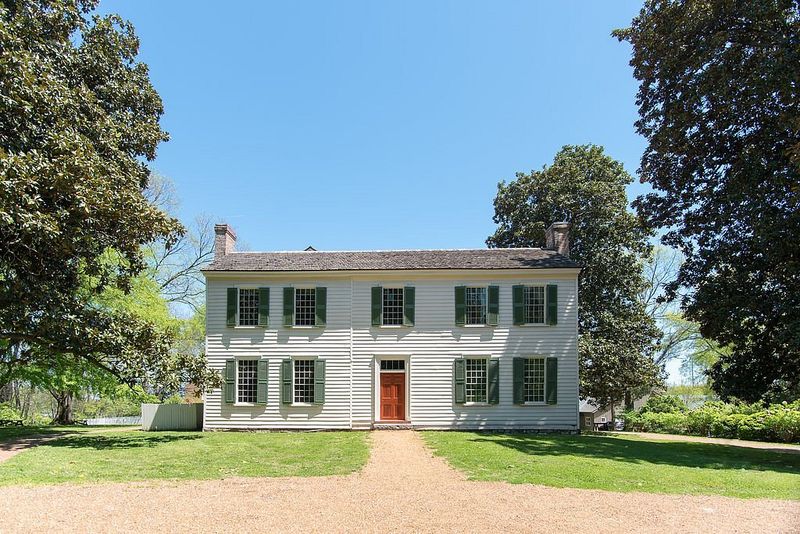
History lives within the walls of Nashville’s oldest surviving house. Built in 1799 by Judge John Overton, founding father of Memphis and close friend of Andrew Jackson, Traveller’s Rest witnessed the evolution of Tennessee from frontier territory to established state.
The Federal-style farmhouse began as a simple four-room structure before expanding to accommodate Overton’s growing family and prominence. During the Civil War, it served as headquarters for Confederate General John Bell Hood during the Battle of Nashville in December 1864. Unlike more opulent plantations, Traveller’s Rest represents the practical elegance of early American architecture with clean lines, symmetrical design, and functional spaces.
The house museum contains many original Overton family possessions, including furniture, portraits, and personal items. Surrounding gardens feature heirloom plants and vegetables similar to what would have grown on the property two centuries ago.
16. Edgewood Plantation (Virginia)
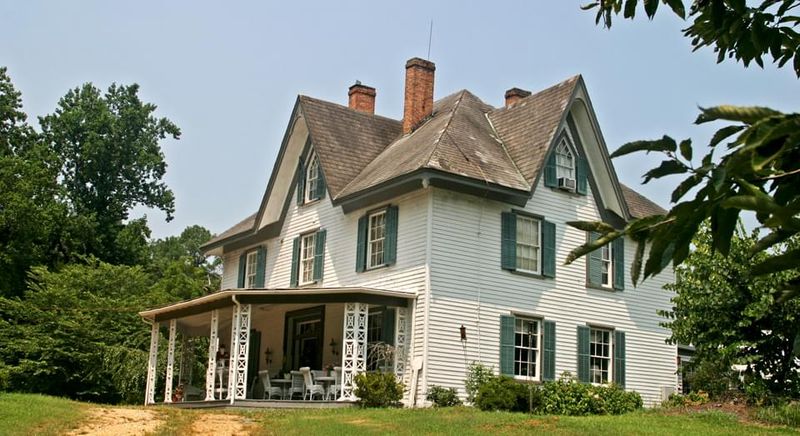
Ghost hunters and history buffs alike are drawn to this hauntingly beautiful Gothic Revival mansion along Virginia’s historic Route 5. Built in 1849 by Richard Rowland, a descendant of Pocahontas and John Rolfe, Edgewood’s distinctive architecture features pointed arches, ornate vergeboards, and a three-story tower.
During the Civil War, Confederate General J.E.B. Stuart’s fiancée, Lizzie Rowland, reportedly watched from the tower for his return. Stuart was killed in battle, and legend says Lizzie’s spirit still watches from the window. The house served as a hospital during the Peninsula Campaign, with bloodstains still visible on some floors. After years of neglect, Edgewood was lovingly restored in the early 2000s.
Today, it operates as a bed and breakfast where guests can stay in rooms named after the spirits said to inhabit them. Its location near Berkeley and Shirley plantations makes it a perfect stop on a James River plantation tour.

